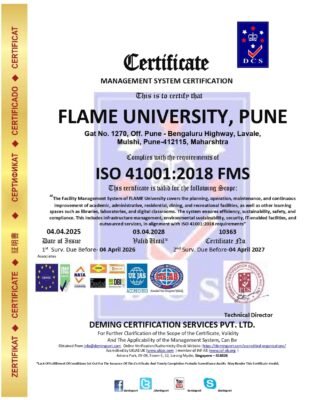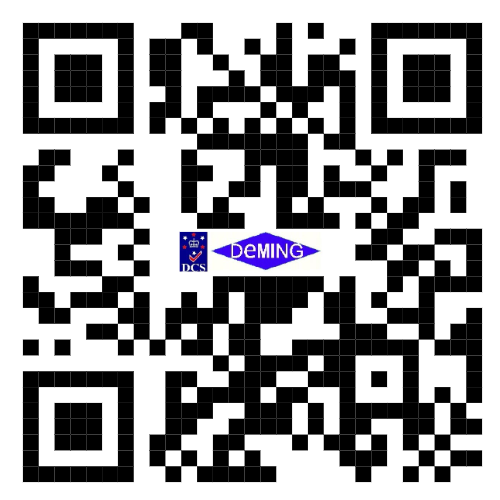ISO 29993 Learning Services Provider (LSP)
ISO 29993:2017 is an international standard that specifies requirements for learning services provided outside the formal education system. Its full title is: “Learning services outside formal education — Service requirements”.
In simple terms, it’s a quality framework for organizations that provide training, courses, workshops, and other learning experiences that are not part of a school, college, or university degree program. The organizations that provide these services are known as Learning Services Providers (LSPs).
Key Purpose: Why was it created?
The primary goal of ISO 29993 is to enhance transparency, accountability, and the perceived value of non-formal learning. Before this standard, the quality of training providers varied greatly. ISO 29993 provides a common, internationally recognized benchmark for quality, helping:
-
Learners and Clients: To choose a reliable and effective training provider.
-
Learning Service Providers (LSPs): To demonstrate their commitment to quality and continuously improve their processes.
-
Procurement Departments: To evaluate and select training vendors based on a robust, standardized set of criteria.
Who is it for? (The Learning Services Provider – LSP)
Any organization that provides learning services can use this standard. This includes:
-
Corporate training departments
-
Management and leadership training companies
-
Vocational and technical skills trainers
-
IT and software certification trainers
-
Language schools
-
Coaching and mentoring services
-
Providers of online courses (e-learning)
-
Safety and compliance training organizations
-
“Train-the-trainer” companies
Core Principles and Key Requirements
ISO 29993 is a process-oriented standard. It focuses on the entire learning service lifecycle, from initial contact to post-course evaluation. The core philosophy is centered on the learner and the achievement of defined learning outcomes.
Here are the critical areas it covers:
1. Needs Analysis & Learning Outcomes
The LSP must work with the client (which could be the learner themselves or a company sponsoring the training) to identify and agree upon the specific learning needs and define clear, measurable learning outcomes. What will the learner be able to DO after the training?
2. Learning Service Design & Development
The training must be designed to effectively meet the agreed-upon learning outcomes. This includes the structure, content, teaching methods, materials, and duration. It emphasizes the importance of selecting appropriate facilitators with the right expertise.
3. Marketing and Communication
All promotional materials (websites, brochures, etc.) must be accurate and not misleading. The information provided to potential learners must be clear about what the service includes, the prerequisites, and the expected outcomes.
4. Delivery of the Learning Service
This is the execution phase. The standard requires that the delivery is consistent with the design and meets the learners’ needs. It covers the learning environment (physical or virtual), the competence of the facilitators, and the support provided to learners.
5. Assessment of Learning Outcomes
The LSP must have a method to assess whether the learners have achieved the intended learning outcomes. This doesn’t always mean a formal exam; it could be a practical demonstration, a project, or other forms of evaluation.
6. Monitoring, Evaluation, and Improvement (The Feedback Loop)
This is a crucial part of the standard. The LSP must systematically collect feedback from learners and clients to evaluate the effectiveness of the service. This data must then be used to drive continuous improvement.
7. Management of the LSP
The standard requires that the provider has competent staff, manages resources effectively, and handles information (like learner records) with confidentiality and security.
ISO 29993 vs. ISO 21001 (Educational Organizations Management Systems)
This is a common point of confusion. Here’s the key difference:
| Feature | ISO 29993:2017 | ISO 21001:2018 |
|---|---|---|
| Focus | Service Requirements for a specific learning service. | Management System for the entire educational organization. |
| Scope | Individual courses, workshops, training programs. | The whole institution (e.g., a school, university, or training academy). |
| Structure | A set of specific requirements for the learning service lifecycle. | Follows the high-level structure of Annex SL (like ISO 9001), focusing on leadership, planning, support, operation, and performance evaluation. |
| Certification | You certify a specific learning service. | You certify the entire organization’s management system. |
| Analogy | It’s like a recipe for a specific, high-quality dish. | It’s like the entire kitchen’s quality management system. |
In summary: ISO 29993 is often seen as more practical and accessible for a pure training provider, while ISO 21001 is more comprehensive and strategic, suitable for formal educational institutions.
Benefits of Certification for an LSP
-
Competitive Advantage: A certified LSP stands out in a crowded market.
-
Enhanced Credibility & Trust: The ISO “badge” is globally recognized and signals quality to clients and learners.
-
Improved Customer Satisfaction: The standard’s focus on needs analysis and outcomes leads to more effective training and happier clients.
-
Streamlined Processes: It provides a clear framework for designing, delivering, and improving learning services.
-
Better Decision-Making: Data from evaluations and monitoring provides concrete evidence for strategic improvements.
-
Easier Procurement: Many large companies and government bodies require or prefer ISO-certified suppliers.
Conclusion
ISO 29993 is the definitive international standard for quality in the non-formal learning and training industry. For a Learning Services Provider (LSP), achieving certification is a powerful way to demonstrate a commitment to delivering real, measurable value to their clients and learners, ensuring that their services are not just delivered, but are genuinely effective.
Example documents needed for ISO 29993 certification
Preparing for an ISO 29993 audit involves creating and organizing documents that provide objective evidence that your Learning Services Provider (LSP) meets the standard’s requirements.
These documents can be broadly categorized into three types, as defined in ISO’s common framework:
-
Mandatory Documents: Explicitly required by the standard (e.g., a Quality Manual).
-
Mandatory Records: Evidence that you have followed your own procedures (e.g., completed feedback forms).
-
Other Documents/Records: Necessary for effective planning, operation, and control of your processes, even if not explicitly mandated.
Here is a comprehensive list of example documents needed for ISO 29993 certification, organized by the key clauses of the standard.
1. Context of the Organization & Leadership (Clauses 4 & 5)
These documents demonstrate management’s commitment and set the strategic framework.
-
Scope Statement: A document defining the boundaries of the learning service(s) you are certifying.
-
Quality Manual (Mandatory Document): A high-level document that outlines your organization’s commitment to quality and describes how your Learning Service Management System (LSMS) meets the requirements of ISO 29993.
-
Roles, Responsibilities, and Authorities Matrix: A document (often a chart) that clearly defines who is responsible for what within the LSMS.
-
Policy Statements: Including a Quality Policy that is communicated and understood within the organization.
2. Planning & Support (Clauses 6 & 7)
These documents show how you manage resources and plan for your services.
-
Competence Matrix and Records (Mandatory Records):
-
Trainer/Facilitator CVs, Certifications, and Qualifications.
-
Records of Trainer Observations, Evaluations, and Performance Reviews.
-
Training Needs Analysis and Training Records for your own staff.
-
-
Documented Procedures: For controlling documents and records (to ensure everyone uses the correct, current version of materials).
-
Infrastructure and Work Environment Records:
-
Classroom/Venue Checklists (for safety, suitability, equipment).
-
IT System Specifications and Maintenance Records (for e-learning platforms).
-
-
Communication Plan: How you communicate internally and with learners/clients.
3. Operational Core – The Learning Service Lifecycle (Clause 8)
This is the most critical section for evidence. It covers the entire journey of a learning service.
8.1 – 8.3: Needs Analysis, Design & Development
-
Learning Needs Analysis (LNA) / Training Needs Analysis (TNA) Template & Records: Documents showing how you identify and agree upon learner and client needs.
-
Service Specification Document: A detailed description of the learning service, including:
-
Defined Learning Outcomes (Mandatory): Clear, measurable statements of what the learner will be able to do.
-
Target Audience and Prerequisites.
-
Content Outline and Structure.
-
Delivery Methods (e.g., virtual, in-person, blended).
-
Duration and Schedule.
-
-
Learning Materials: The actual content (e.g., slide decks, workbooks, e-learning modules, videos) that has been reviewed and approved.
-
Facilitator Guide / Session Plan: Detailed instructions for delivering the service consistently.
8.4 – 8.5: Marketing, Enrolment & Agreement
-
Marketing and Promotional Materials: Brochures, website screenshots, ads. These must be aligned with the actual service offered.
-
Service Agreement / Terms and Conditions (Mandatory Document): The formal contract or terms that outline the rights and responsibilities of both the LSP and the learner/client. This must include details on fees, cancellation, confidentiality, and complaint handling.
-
Pre-Course Information Pack: What is sent to learners before the service begins (joiner instructions, prerequisites, schedule).
8.6 – 8.7: Delivery & Support
-
Attendance Registers (Mandatory Record).
-
Records of Learner Support: Evidence of how you support learners (e.g., emails answering questions, forum interactions, tutorial records).
-
Contingency Plan: For handling issues like trainer illness or IT failure.
8.8: Assessment of Learning Outcomes
-
Assessment Methods and Tools: Exams, practical tests, project briefs, observation checklists, etc.
-
Marking Schemes / Assessment Criteria: How assessments are graded to ensure fairness and consistency.
-
Records of Assessment Results (Mandatory Record).
-
Certificates of Completion or Achievement.
4. Performance Evaluation & Improvement (Clause 9)
These documents prove you are monitoring, measuring, and improving your services.
-
Feedback Collection Tools (Mandatory Records):
-
End-of-Course Evaluation Forms (e.g., “Happy Sheets”).
-
Post-Training Surveys (e.g., sent 3-6 months later to measure application of learning).
-
Client Feedback Meeting Notes.
-
-
Procedure for Monitoring Service Performance: How you collect and analyze feedback and other data (e.g., assessment results, attendance).
-
Internal Audit Program (Mandatory Records):
-
Internal Audit Schedule, Reports, and Non-Conformity Records.
-
-
Management Review Records (Mandatory Records):
-
Agenda, Minutes, and Actions from regular management meetings to review the LSMS.
-
-
Procedure for Handling Non-Conforming Services and Corrective Actions (Mandatory Records):
-
Complaint Log and records of how complaints were resolved.
-
Corrective Action Request (CAR) Forms showing how you investigate the root cause of problems and prevent recurrence.
-
How to Organize This for an Audit
An auditor will not just want to see these documents; they will want to see a trail of evidence. For example, they might pick a specific course and ask to see:
-
The Needs Analysis that led to its creation.
-
The Service Specification with its learning outcomes.
-
The Marketing Material used to promote it.
-
The Signed Agreement with a client.
-
The Trainer’s qualifications.
-
The Learner Attendance and Assessment Results.
-
The Learner Feedback collected.
-
The Management Review where this feedback was discussed and an Improvement Action was initiated.
By having these documents well-organized, controlled, and readily available, you demonstrate a mature, systematic approach to providing quality learning services, which is the ultimate goal of ISO 29993 certification.








Reviews
There are no reviews yet.